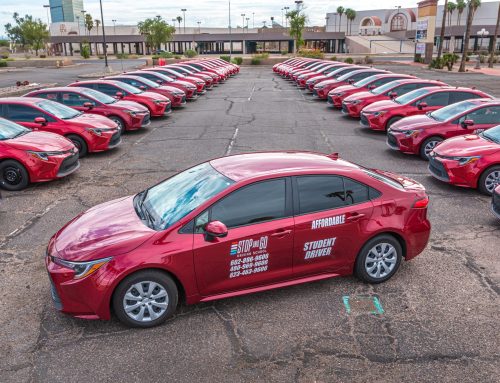The Fast Lane: Essential Tips for Safe Highway Driving
Highway driving is one of the most intimidating aspects of driving. With higher speeds, more traffic, and complex road layouts, highways present unique challenges that can often be overwhelming for new drivers (and experienced ones, too!).
This guide will help you navigate the essentials of safe highway driving, especially in the Phoenix metro area, where major highways like the I-10 are a daily part of life.
Top Highway Driving Concerns
Understanding the challenges of highway driving is the first step to overcoming them. Here are some of the most common concerns drivers of all experience levels may have:
- High speeds: Driving at high speeds requires quicker reaction times and better vehicle control.
- Heavy traffic: Navigating through dense traffic, especially during rush hour, requires heightened alertness.
- Merging: Merging onto highways demands precise timing and awareness to blend smoothly with traffic.
- Complex interchanges: Major highways often have intricate interchanges and exit ramps.
- Construction zones: Frequent construction on highways requires even more awareness and adaptability.
Essential Highway Driving Tips
Handling the challenges of highway driving involves a combination of preparation, practice, and the right strategies. Follow these essential tips to help you navigate the road with confidence.
Plan when to drive
Highways in Phoenix, particularly the I-10, experience heavy traffic. It’s important to understand how traffic flows, especially during peak hours. Knowing the times of day when traffic is lighter can help you plan your driving accordingly.
Merge and change lanes carefully
As you approach, accelerate to match the speed of vehicles on the highway and look for a gap in traffic, paying close attention to surrounding cars. When changing lanes, always signal early, check your mirrors, and perform shoulder checks.
Watch your speed
Maintaining a consistent speed is crucial on the highway. Stay within the speed limits and keep up with the flow of traffic. Avoid sudden braking or accelerating, as this can easily cause collisions on congested roads.
Maintain a safe following distance
Keep a safe following distance from the vehicle in front of you. This gives you more time to react to sudden stops or changes in traffic conditions. The general rule is to maintain a distance of at least three seconds between you and the car ahead.
Navigating interchanges
Familiarize yourself with major interchanges and exits on your route. Use GPS or a map app to plan your trip ahead of time so you know which lanes to be in for upcoming exits or merges.
Driving in Construction Zones
Highway driving is complex enough. When you add construction zones into the mix, the challenges multiply. These areas require extra caution and a specific set of skills.
Reduced speed limits
Always adhere to posted speed limits in construction zones. These limits are often lower than usual to protect construction workers and accommodate altered traffic patterns.
Increased attention
Pay close attention to road signs, cones, and barriers that indicate lane closures or shifts. Construction zones often change traffic patterns, so staying alert is crucial.
No distractions
Eliminating distractions is always critical, but it’s especially important in construction zones where people may be working close to traffic. Your full attention should be on the road and the conditions around you.
Safe following distance
Increase your following distance in construction zones. Sudden stops are common, and having extra space can prevent rear-end collisions.
Register for a driver’s ed course and get the skills to drive safely on and off the highway. Our expert instructors and hands-on training ensure you gain the confidence you need to handle any driving situation.








